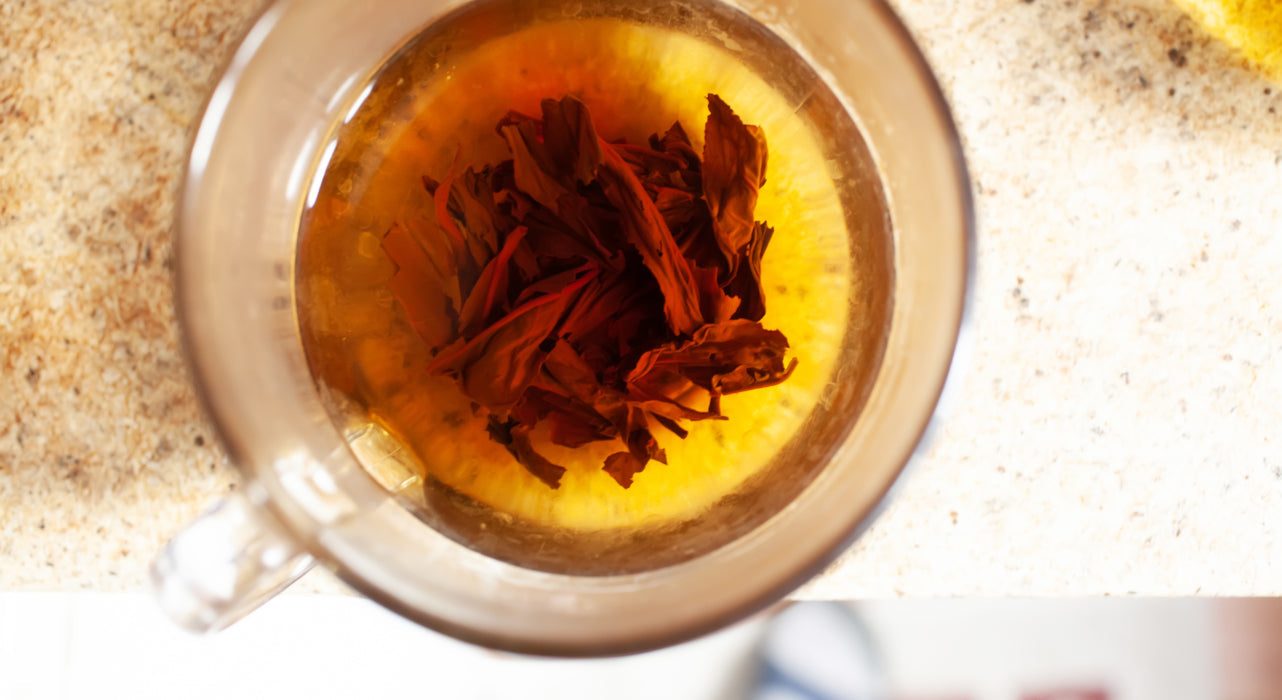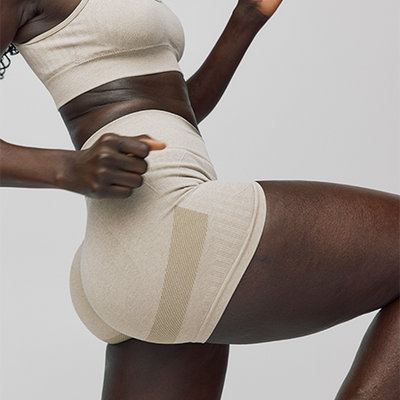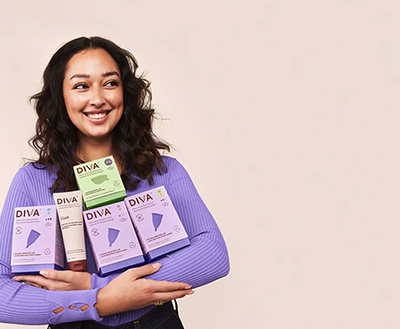
In this article /

Herbs or teas for menstrual cramps are everywhere these days. Have you tried any of them? And of those that you’ve tried, how many have worked?
Some people have great results with natural remedies for common ailments. While for others over-the-counter pain relievers, and even prescription drugs, might be the best course of action.
If you’ve been wondering about teas, herbs and other natural remedies to help with period cramps, we’ve done some research. Some of these natural remedies might be worth exploring, while others can’t be proven effective.
What is a Period Cramp?
First things first, what’s really going on when you experience a period cramp? Period cramps are muscular contractions of the uterus as it prepares to shed the uterine lining. Anything you can do to improve muscular functioning and reduce muscle spasms throughout the body can be used to help the muscles of the uterus.
Fluctuations in sex hormones can lead to intense period cramps and sometimes be signs of an underlying condition. It never hurts to investigate further with a healthcare professional. Other times, these symptoms are normal for your cycle and not as debilitating.
Common Remedies for Menstrual Pain
If you regularly deal with menstrual cramps; you know the old standbys. Common remedies for period cramps include:
- Heat therapy, such as using a heating pad or taking a warm bath
- Over-the-counter pain relievers such as ibuprofen or naproxen
- Yoga and other relaxation techniques
- Light exercise or stretching
- Drinking plenty of water to stay hydrated
- Getting enough sleep and managing stress
Some lesser-known remedies include ginger, omega-3 fatty acids and magnesium.

Fact or Fiction?
Painful periods can be debilitating and it’s important to find a solution that works for you. Could some of these natural solutions be an effective option for combating monthly menstrual pains?
Many hormone balancing teas for menstrual cramps have been popping up. While tea is delicious and soothing, is it really the answer to your menstrual pain?
Fiction
Before you desperately order all the “herbs for menstrual cramps” or “teas for menstrual cramps” that are popping up on your IG, here are natural remedies that lack scientific proof:
- A cup of tea to relieve cramps. Chamomile tea, peppermint tea, raspberry leaf tea, cinnamon tea, fennel tea, or even green tea only have a soothing or calming effect—there's no evidence to suggest that these herbal teas can reduce period pain.
- While essential oils may have a pleasant smell and provide feelings of relaxation, there is no scientific evidence to support the claim that they can relieve cramps.
Facts
There are several scientifically proven natural remedies for menstrual cramps including:
- Ginger has anti-inflammatory properties and has been found to be effective in reducing the intensity of menstrual cramps.
- Omega-3 fatty acids, found in salmon, chia seeds, and avocadoes. Omega-3 fatty acids have been found to reduce inflammation and provide pain relief.
- Magnesium and magnesium-rich foods, like almonds, spinach, and dark chocolate. Magnesium is a mineral that helps regulate muscle contractions and reduce spasms.
- Heat therapy provides relief from cramps by soothing and relaxing the muscles of the uterus and surrounding areas.
- Exercise can help reduce the severity of cramps by moving and stretching muscles, as well as releasing endorphins, which are natural painkillers. Regular exercise throughout your entire menstrual cycle will help ward off cramps.
- Acupuncture and acupressure have been found to be effective in reducing the intensity.
- Having an orgasm also causes a release of endorphins, as well as causing the muscles in the uterus to contract and then relax. However, orgasms don’t work for everyone, and they can sometimes increase cramps.
- Applying cramp creams that contain scientifically-backed ingredients like castor oil, camphor, wintergreen, and arnica—a powerful natural formula for relief from pain and inflammation.
What works for one person may not work for another. It's always best to consult with a healthcare provider to determine which method provides the most health benefits for you.




















